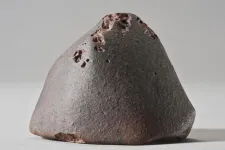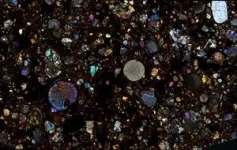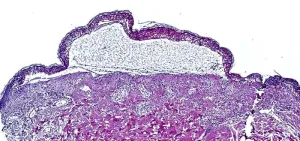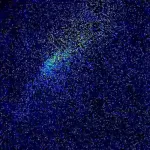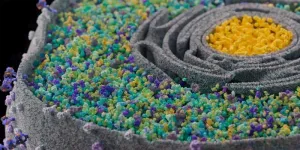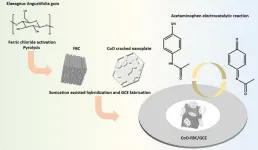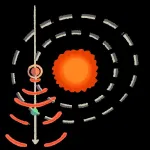(Press-News.org)
An international team led by three researchers from the CNRS1, the European Southern Observatory (ESO, Europe), and Charles University (Czech Republic) has successfully demonstrated that 70% of all known meteorite falls originate from just three young asteroid families. These families were produced by three recent collisions that occurred in the main asteroid belt 5.8, 7.5, and about 40 million years ago. The team also revealed the sources of other types of meteorites; with this research, the origin of more than 90% of meteorites has now been identified. This discovery is detailed in three papers, a first published on 13 September 2024 in the journal Astronomy and Astrophysics, and two new papers to be published on 16 October 2024 in Nature.
An international team of researchers has shown that 70% of all known meteorite falls originate from three young asteroid families (Karin, Koronis and Massalia) formed by collisions in the main asteroid belt 5.8, 7.5 and about 40 million years ago. In particular, the Massalia family has been identified as the source of 37% of known meteorites.
While more than 70,000 meteorites are known, only 6% had been clearly identified by their composition (achondrites) as coming from the Moon, Mars, or Vesta, one of the largest asteroids in the main belt. The source of the other 94% of meteorites, the majority of which are ordinary chondrites2, had remained unidentified.
Why are these three young families the source of so many meteorites?
This can be explained by the life cycle of asteroid families. Young families are characterised by an abundance of small fragments left over from collisions. This abundance increases the risk of collisions between fragments and, coupled with their high mobility, their escape from the belt, possibly in the direction of Earth. The asteroid families produced by older collisions, on the other hand, are "depleted" sources of meteorites. The abundance of small fragments that once made them up has naturally eroded and finally disappeared after tens of millions of years of successive collisions and their dynamic evolution. Thus, Karin, Koronis and Massalia will inevitably coexist with new sources of meteorites from more recent collisions and eventually give way to them.
A method for tracing the family tree of meteorites and asteroids
This historic discovery was made possible by a telescopic survey of the composition of all the major asteroid families in the main belt, combined with state-of-the-art computer simulations of the collisional and dynamical evolution of these major families. This approach has been extended to all meteorite families, revealing the primary sources of the carbonaceous chondrites and achondrites, which come in addition to those from the Moon, Mars, and Vesta.
Thanks to this research, the origin of more than 90% of meteorites has now been identified. It has also enabled scientists to trace the origin of kilometre-sized asteroids (a size that threatens life on Earth). These objects are the focus of many space missions (NEAR Shoemaker, Hayabusa1, Chang'E 2, Hayabusa2, OSIRIS-Rex, DART, Hera, etc.). In particular, it appears that the asteroids Ryugu and Bennu, recently sampled by the Hayabusa2 (Japanese Aerospace Exploration Agency JAXA) and OSIRIS-REx (NASA) missions and studied in laboratories around the world, particularly in France, are derived from the same parent asteroid as the Polana family.
The origin of the remaining 10 per cent of known meteorites is still unknown. To remedy this, the team plans to continue their research, this time focusing on characterising all young families that were formed less than 50 million years ago.
From the Laboratory of Astrophysics of Marseille (Aix-Marseille Université/CNRS/CNES).
Meteorites consisting of silicates, representing approximately 80% of all known meteorites. END
The researchers used spatial proteomics to analyze skin samples from patients with toxic epidermal necrolysis. This cutting-edge approach, known as Deep Visual Proteomics, merges powerful microscopy with AI-driven analysis, laser-guided microdissection and ultimately ultra-high sensitivity mass spectrometry. They zoomed in on individual cells and studied them like never before, creating a map of the thousands of proteins driving this deadly reaction.
Thierry Nordmann, first author, clinician-scientist at the Max Planck Institute of Biochemistry and senior dermatologist at the Ludwig Maximilians Universität München explains: ...
A new study has revealed that islands are home to around one in three of the world’s plant species, despite covering just over five per cent of the Earth’s land surface.
Dr Julian Schrader, from Macquarie University’s School of Natural Sciences, led a team of a dozen researchers from Australia, Germany, Spain, USA, Greece and Japan in analysing data on more than 304,103 plants – essentially all species known to science worldwide – uncovering a treasure trove of island biodiversity.
The team found 94,052 species are native to islands. Of these, 63,280 are endemic –found nowhere else in the world – representing 21 per cent of global plant diversity.
The ...
The chemical messenger dopamine is an essential catalyst that fuels activities and behaviors ranging from movement to cognition and learning. However, neuroscientists have long debated whether these functions rely on rapid bursts of dopamine or on the neurochemical’s slower action.
A new study led by researchers at Harvard Medical School provides an answer.
The work, conducted in mice and published Oct. 16 in Nature, shows that initiating movement doesn’t require a rapid burst of dopamine but instead relies on slow activity of the chemical over time. By contrast, reward-oriented behaviors, related to ...
While marine heatwaves (MHWs) have been studied at the sea surface for more than a decade, new research published today in Nature has found 80 per cent of MHWs below 100 metres are independent of surface events, highlighting a previously overlooked aspect of ocean warming.
The study was conducted by Australia’s national science agency CSIRO and the Chinese Academy of Sciences.
MHWs are prolonged temperature events that can cause severe damage to marine habitats, such as impacts to coral reefs and species displacement. These events are becoming more frequent due to global warming, with notable occurrences off Australia’s East ...
In a study published in Nature, Prof. Daniel Falush of the Shanghai Institute of Immunity and Infection (SIII) of the Chinese Academy of Sciences, Prof. Yoshio Yamaoka of Oita University, Japan, and Prof. Kaisa Thorell of Gothenberg University, Sweden uncovered fascinating new details about the long association of humans and our stomach bacteria.
Since its discovery in 1983, Helicobacter pylori has become notorious as the cause of around a million cases of stomach cancer a year as well as other life-threatening gastric diseases. The bacterium is ...
Inside cells, it's like in a packed dance club: hundreds are partying. Some keep to themselves, others make their way through the crowd, chatting to everyone they meet. Some just say a quick hello, others stay with their best friends. In this club, there are all kinds of different interactions between party-goers. The same is the case in cells with proteins.
Cells are filled with many different types of proteins that interact with each other and often work together in groups. These groups are called complexes ...
In recent years, the excessive use of acetaminophen (APAP) has become a significant human hazard and social burden. Rapid and automated electrochemical detection has emerged as a crucial method for measuring APAP concentration in human urine. This study explores a novel porous cobalt-derived biomass electrocatalyst material prepared from Elaeagnus angustifolia gum and investigates its electrochemical properties as well as its specific detection capability for APAP. Their work is published in the journal Industrial Chemistry & Materials on 18 July 2024.
Acetaminophen (APAP) is a commonly used analgesic and antipyretic ...
The 2024 Richard N. Merkin Prize in Biomedical Technology was awarded to F. William Studier of Brookhaven National Laboratory in a ceremony and symposium at the Broad Institute on September 17, 2024. The prize, created by the Merkin Family Foundation and administered by the Broad, recognizes novel technologies that have significantly improved human health and carries a $400,000 award. [Event Video]
Studier was announced as the winner in May for his development, in 1986, of an efficient, scalable method of producing ...
The “São Paulo School of Advanced Science on Structural Safety and its role in reducing greenhouse gas emissions by the built environment” will be held May 3-16, 2025, in Brazil, at the São Carlos School of Engineering of the University of São Paulo in its São Carlos campus.
Reporters are invited to register for the scientific sessions and short courses, which will present state-of-art science and results of new research.
This advanced science school will address the main challenges related to Structural Safety ...
October 16, 2024, Mountain View, CA - Scientists at the SETI Institute and partners from Penn State University used the Allen Telescope Array (ATA) to search for signs of alien technology in the TRAPPIST-1 star system. The team spent 28 hours scanning the system, looking for radio signals that could indicate extraterrestrial technology. This project marks the longest single-target search for radio signals from TRAPPIST-1. Although they didn’t find any evidence of extraterrestrial technology, their work provided valuable data ...
